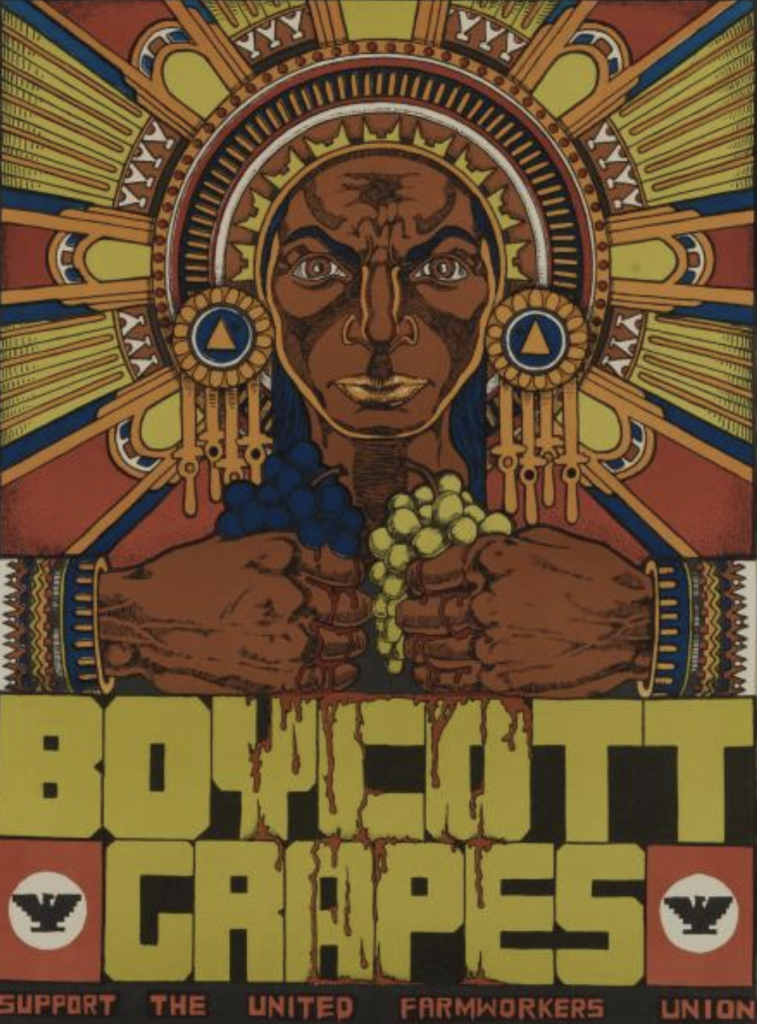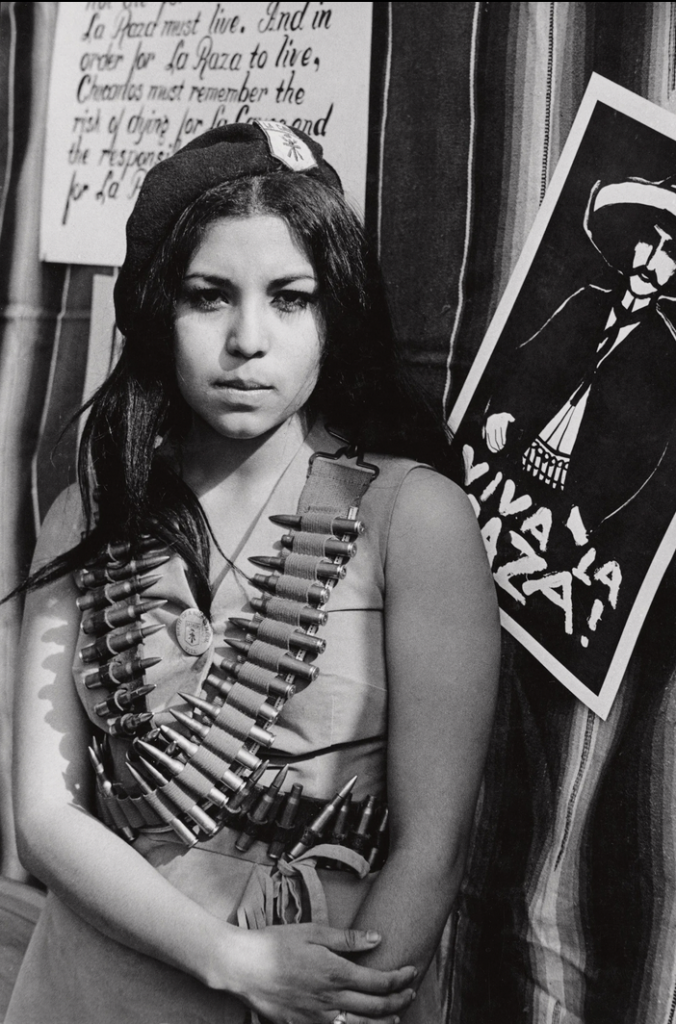History; in the Service of Solidarity
Image: A group of bracero workers at the Monterrey, Mexico, processing center in 1956. (Leonard Nadel/National Museum of American History).
General Resources
The Bracero History Archive.
Bracero Oral History Project.
UCLA Labor Center: Resources about the Bracero Program.
Books
Deborah Cohen: Braceros: Migrant Citizens and Transnational Subjects in the Postwar United States and Mexico.
Mireya Loza: Defiant Braceros: How Migrant Workers Fought for Racial, Sexual, and Political Freedom.
Alberto García Maldonado: Abandoning Their Beloved Land: The Politics of Bracero Migration in Mexico. Forthcoming.
Ronald Mize & Alicia Swords: Consuming Mexican Labor: From the Bracero Program to NAFTA.
Articles
Lori A. Flores: A Town Full of Dead Mexicans: The Salinas Valley Bracero Tragedy of 1963, the End of the Bracero Program, and the Evolution of California’s Chicano Movement.
Matt Garcia: Ambassadors in Overalls: Mexican Guest Workers and the Future of Labor.
Mireya Loza: 100 Years of Mexican Guest Workers in the United States.
Brendan Seibel: These intimate photos chronicle the Mexican worker program that helped ‘feed and build America’: Then these ‘braceros’ were just expected to return to their country.
Wikipedia:
Videos & Podcasts
The Braceros at 80.
Forgotten Voices: The Story of the Bracero Program.
Alberto García Maldonado: Faith, Conflict, and Bracero Migration in Mexico’s Greater Bajío.
Mireya Loza: Latino Labor History.
New Books Network Podcast: Defiant Braceros: How Migrant Workers Fought for Racial, Sexual, and Political Freedom.
Image from UC San Diego, Library gets digital archive of farm worker movement.
General Resources
Katie Anastas: Mapping UFW Strikes, Boycotts, and Farm Worker Actions 1965-1975.
Farmworker Movement Documentation Project: Primary source accounts by the UFW volunteers who built the movement.
The Bob Fitch Photography Archive: Cesar Chavez/UFW, 1968-1974.
United Farm Workers official webpage. (See especially the History & Chronology sections.)
Books
Lauren Araiza: To March for Others: The Black Freedom Struggle and the United Farm Workers.
Frank Bardacke: Trampling Out the Vintage: Cesar Chavez and the Two Souls of the United Farm Workers.
Cesar Chavez: An Organizer’s Tale: Speeches.
Lori A. Flores: Grounds for Dreaming: Mexican Americans, Mexican Immigrants, and the California Farmworker Movement.
Marshall Ganz: Why David Sometimes Wins: Leadership, Organization, and Strategy in the California Farm Worker Movement.
Mario T. Garcia:
Matthew Garcia: From the Jaws of Victory: The Triumph and Tragedy of Cesar Chavez and the Farm Worker Movement.
Miriam Pawel:
Randy Shaw: Beyond the Fields: Cesar Chavez, the UFW, and the Struggle for Justice in the 21st Century.
Craig Scharlin & Lilia Villanueva: Philip Vera Cruz: A Personal History of Filipino Immigrants and the Farmworkers Movement.
Luis Valdez: Theatre of the Sphere: The Vibrant Being.
Alan J. Watt: Farm Workers and the Churches: The Movement in California and Texas.
Articles
Lauren Araiza:
David Bacon:
Frank Bardacke: The United Farm Workers Was More Than Cesar Chavez.
Jerry Brown: The United Farm Workers Grape Strike and Boycott, 1965-1970: An Evaluation of the Culture of Poverty Theory.
Eric Brazil: review of ‘Trampling Out the Vintage,’ by Frank Bardacke.
Lori A. Flores:
Marshall Ganz:
Matt Garcia:
Emil Guillermo: Eclipsed by Cesar Chavez, Larry Itliong’s Story Now Emerges: Fifty-years later, the Filipino community acts to clarify the history of the Delano Grape Strike and its leader, Larry Itliong.
Miriam Pawel:
Gayle Romasanta: Why It Is Important to Know the Story of Filipino-American Larry Itliong.
Somini Sengupta: ‘A Duty to Fight’: Labor: Nearly 30 years ago, Philip Vera Cruz helped start what became the UFW. His struggle represents a forgotten chapter in the history of Filipino farm workers.
Jocelyn Sherman: Dr. King’s telegram to Cesar Chavez during his 1968 fast for nonviolence.
Wikipedia:
Videos & Podcasts
Lauren Araiza (author of To March for Others: The Black Freedom Struggle and the United Farm Workers) in discussion with Bill Jennings, former Black Panther who supported the farm workers.
Asian Law Caucus: AAPI Civil Rights Heroes – Philip Vera Cruz.
Lynn Burnett:
César Chávez discussion panel.
Jessica Govea: From Girlhood to Inspiring a Movement.
Larry Itliong’s Vital Contributions to the Farm Labor Movement.
Latino Studies Podcast: Lori Flores, “Grounds for Dreaming: Mexican Americans, Mexican Immigrants and the California Farmworker Movement”.
Randy Shaw: Beyond the Fields.
Image: Xavier Viramontes, Boycott Grapes, Support the United Farm Workers Union, 1973, offset lithograph on paper, Smithsonian American Art Museum, Gift of Tomás Ybarra-Frausto, 1995.50.58, © 1973, Xavier Viramontes.
Image: Members of Las Adelitas de Aztlán at the second Chicano Moratorium protest against the Vietnam War on Feb. 28, 1970. At right is Hilda Reyes. They marched in the rain under a banner made by Gloria Arellanes and other members of the group. (Oscar Castillo)
Rodolfo F. Acuña: The Making of Chicana/o Studies: In the Trenches of Academe.
Eric Avila, Charlene Villaseñor Black, Karen Mary Davalos, Chon A. Noriega, Rafael Pérez-Torres , & Chela Sandoval (editors): The Chicano Studies Reader: An Anthology of Aztlán, 1970―2019.
Maylei Blackwell: ¡Chicana Power!: Contested Histories of Feminism in the Chicano Movement.
Maylei Blackwell, María Eugenia Cotera, & Dionne Espinoza (editors): Chicana Movidas: New Narratives of Activism and Feminism in the Movement Era.
Yolanda Broyles-González: El Teatro Campesino: Theater in the Chicano Movement.
Sal Castro & Mario T. García: Blowout!: Sal Castro and the Chicano Struggle for Educational Justice.
Darius V. Echeverría: Aztlán Arizona: Mexican American Educational Empowerment, 1968–1978.
Harry Justin Elam Jr.: Taking It to the Streets: The Social Protest Theater of Luis Valdez and Amiri Baraka.
Jerry Garcia: We Are Aztlán!: Chicanx Histories in the Northern Borderlands.
Mario T. García & Ellen McCracken (editors): Rewriting the Chicano Movement: New Histories of Mexican American Activism in the Civil Rights Era.
Mario T. García: The Chicano Generation: Testimonios of the Movement.
Juan Gómez-Quiñones & Irene Vásquez: Making Aztlán: Ideology and Culture of the Chicana and Chicano Movement, 1966-1977.
Rodolfo Corky Gonzales: Message to Aztlán: Selected Writings of Rodolfo “Corky” Gonzales.
Jose Angel Gutierrez: The Making of a Chicano Militant: Lessons from Cristal.
David Montejano:
Carlos Munoz: Youth, Identity, Power: The Chicano Movement.
Armando Navarro:
Randy J. Ontiveros: In the Spirit of a New People: The Cultural Politics of the Chicano Movement.
Lorena Oropeza:
Jimmy Patiño: Raza Sí, Migra No: Chicano Movement Struggles for Immigrant Rights in San Diego.
Rev. Juan M. Perez: Through Brown Eyes: A Short History of the Dallas Brown Berets Organization and the Chicano Movement from my Point of View.
Steven Rosales: Soldados Razos at War: Chicano Politics, Identity, and Masculinity in the U.S. Military from World War II to Vietnam.
Reies Lopez Tijerina: They Called Me “King Tiger”: My Struggle for the Land and Our Rights.
Jesús Salvador Treviño: Eyewitness: A Filmmaker’s Memoir of the Chicano Movement.
Luis Valdez: Theatre of the Sphere: The Vibrant Being.
Ernesto B. Vigil: The Crusade for Justice: Chicano Militancy and the Government’s War on Dissent.
Image: White Mountain Apache Tribe, Arizona, 1906. “Before the Storm,” photo by Edward S. Curtis.
Books
Gary Clayton Anderson: The Conquest of Texas: Ethnic Cleansing in the Promised Land, 1820–1875.
James F. Brooks: Captives and Cousins: Slavery, Kinship, and Community in the Southwest Borderlands.
Clarissa Confer, Andrae Marak, & Laura Tuennerman (editors): Transnational Indians in the North American West.
David Correia, Jennifer Nez Denetdale, Nick Estes, & Melanie K. Yazzie: Red Nation Rising: From Bordertown Violence to Native Liberation.
Maurice S. Crandall: These People Have Always Been a Republic: Indigenous Electorates in the U.S.-Mexico Borderlands, 1598–1912.
Brian DeLay: War of a Thousand Deserts: Indian Raids and the U.S.-Mexican War.
Winston P. Erickson: Sharing the Desert: The Tohono O’odham in History.
Raphael Brewster Folsom: The Yaquis and the Empire: Violence, Spanish Imperial Power, and Native Resilience in Colonial Mexico.
Pekka Hämäläinen: The Comanche Empire.
Shelley Bowen Hatfield: Chasing Shadows: Apaches and Yaquis Along the United States-Mexico Border, 1876-1911.
Evelyn Hu-DeHart: Yaqui Resistance and Survival: The Struggle for Land and Autonomy, 1821–1910.
Karl Jacoby: Shadows at Dawn: An Apache Massacre and the Violence of History.
Andrae M. Marak & Laura Tuennerman: At the Border of Empires: The Tohono O’odham, Gender, and Assimilation, 1880-1934.
Brenden W. Rensink: Native but Foreign: Indigenous Immigrants and Refugees in the North American Borderlands.
Jeffrey M. Schulze: Are We Not Foreigners Here?: Indigenous Nationalism in the U.S.-Mexico Borderlands.
Articles
Lynn Burnett: The Comanche Empire and the Destruction of Northern Mexico.
Brain Delay:
Karl Jacoby:
Brenden W. Rensink: Indigenous Peoples and North American Immigration History: A Historiographical Essay.
Videos & Podcasts
Maurice S. Crandall: “These People Have Always Been a Republic: Indigenous Electorates in the U.S.-Mexico Borderlands, 1598–1912.”
The Red Nation: Red Nation Rising: From Bordertown Violence to Native Liberation.
Western History Panels: Civil War Era and Native Americans in the West.
Image: from Loren Collingwood & Benjamin Gonzalez O’Brien’s great introductory article, A History of Sanctuary Cities in the United States.
Books
Harald Bauder & Jonathan Darling: Sanctuary cities and urban struggles: Rescaling migration, citizenship, and rights.
Loren Collingwood & Benjamin Gonzalez O’Brien: Sanctuary Cities: The Politics of Refuge.
Melvin Delgado: Sanctuary Cities, Communities, and Organizations: A Nation at a Crossroads.
Articles
ACLU: ACLU Response to “Sanctuary City” Legislation.
Fred Barbash: Renewed Trump ‘sanctuary cities’ crackdown ruled illegal.
Harald Bauder & Dayana A. Gonzalez: Municipal Responses to ‘Illegality’: Urban Sanctuary across National Contexts.
Darla Cameron: How sanctuary cities work, and how Trump’s blocked executive order could have affected them.
Lauren Carasik: Whom Do Sanctuary Cities Protect?
CNN: Texas governor signs bill banning sanctuary cities.
Loren Collingwood & Benjamin Gonzalez O’Brien:
Loren Collingwood, Stephen Omar El-Khatib, & Benjamin Gonzalez O’Brien: The Politics of Refuge: Sanctuary Cities, Crime, and Undocumented Immigration.
Kate Dwyer: What It Means to Be a ‘Sanctuary City’ for Undocumented Immigrants.
Angela S. García: Giving sanctuary to undocumented immigrants doesn’t threaten public safety—it increases it.
Judith Giesberg: Jeff Sessions is wrong. Sanctuary-city advocates aren’t like secessionists. They’re like abolitionists. A history lesson for the attorney general.
David K. Hausman: Sanctuary policies reduce deportations without increasing crime.
Nick Miroff:
Alex Nowrasteh: Immigration and Crime – What the Research Says.
NPR:
Benjamin Gonzalez O’Brien:
Richard Pérez-Peña: Contrary to Trump’s Claims, Immigrants Are Less Likely to Commit Crimes.
Nick Tabor: The Sanctuary Solution: Sanctuary cities will be one of the strongest bulwarks against Trump’s inhumane immigration agenda.
Chuck Wexler: Police chiefs across the country support sanctuary cities because they keep crime down.
Tom K. Wong:

